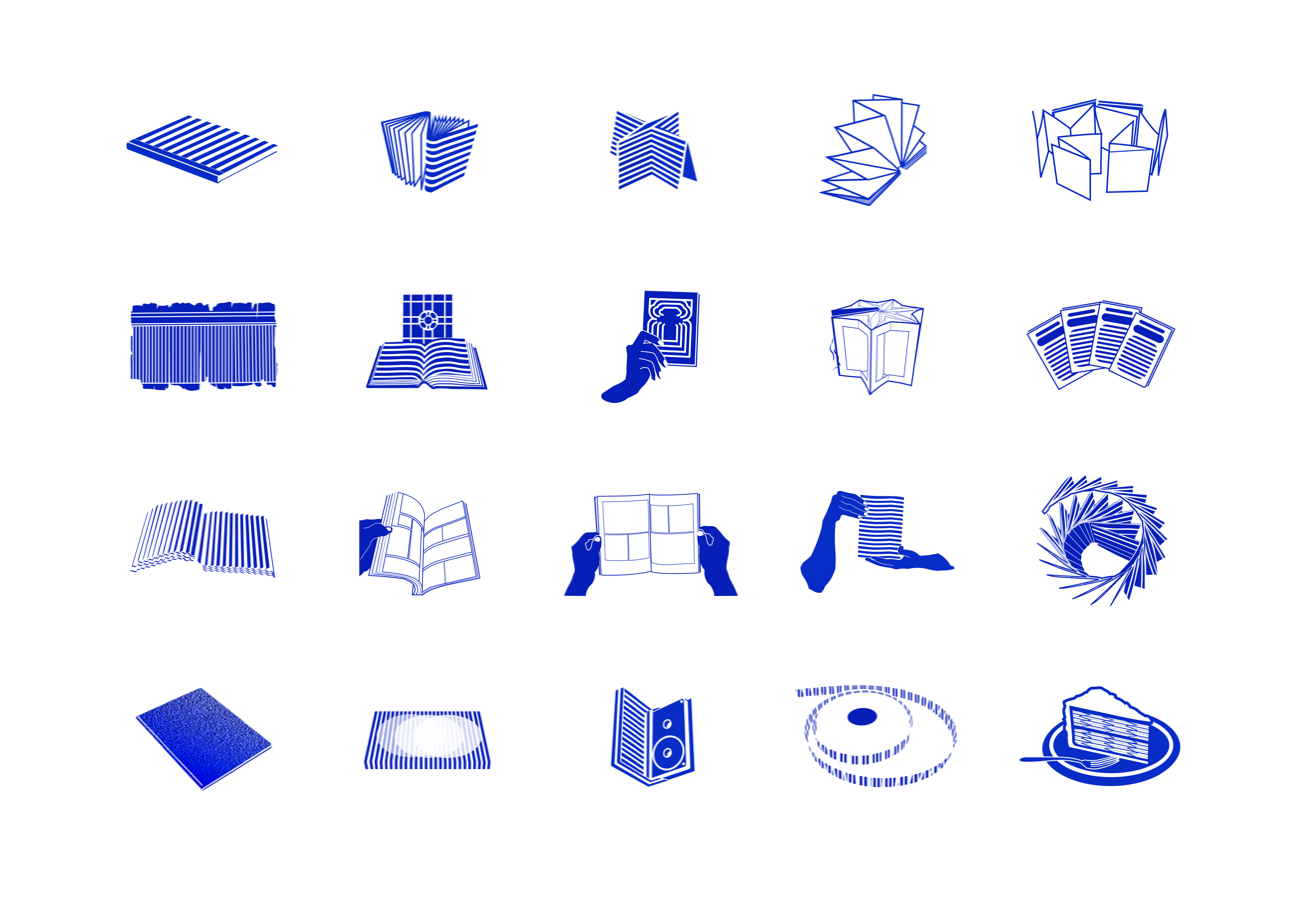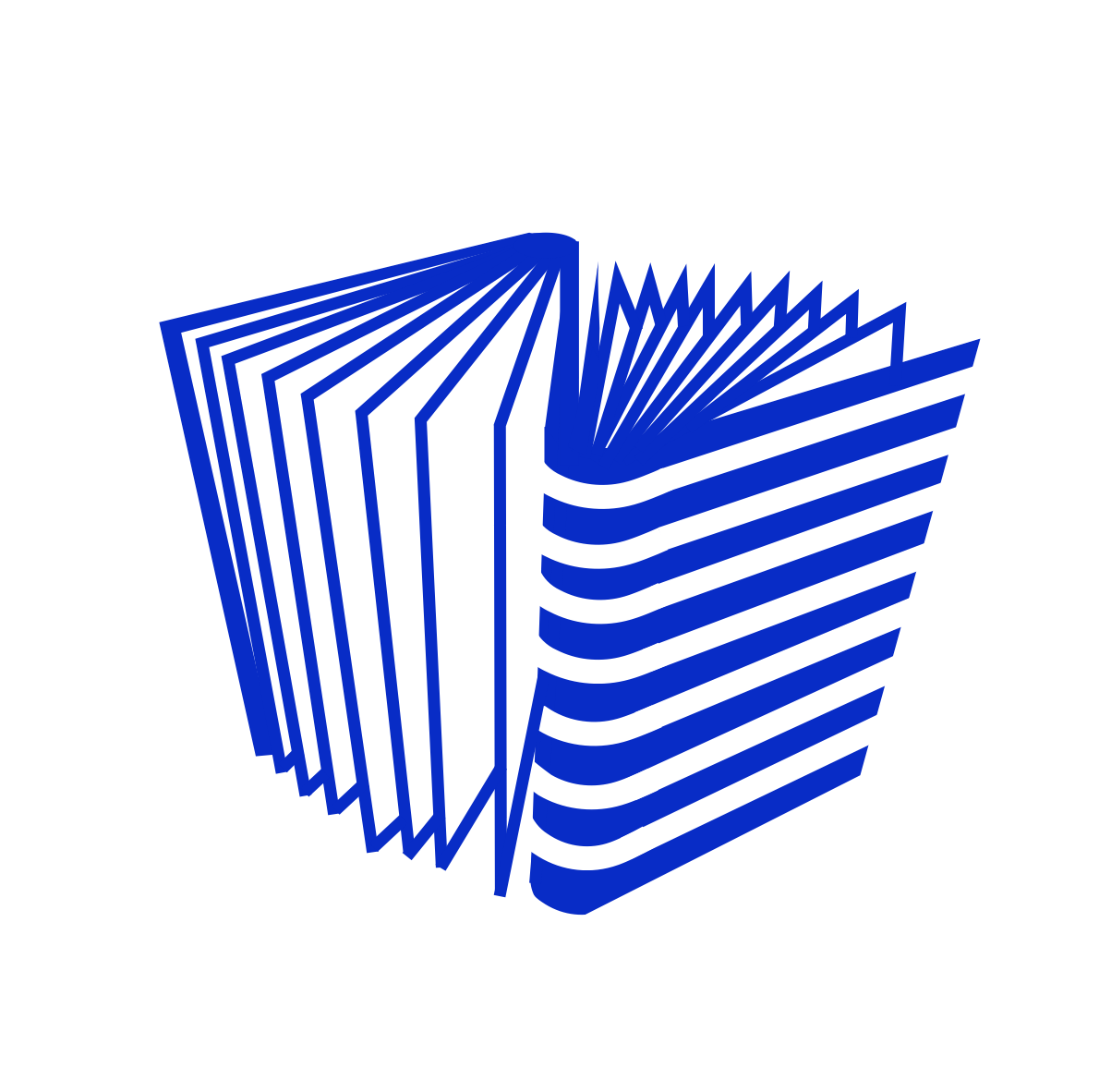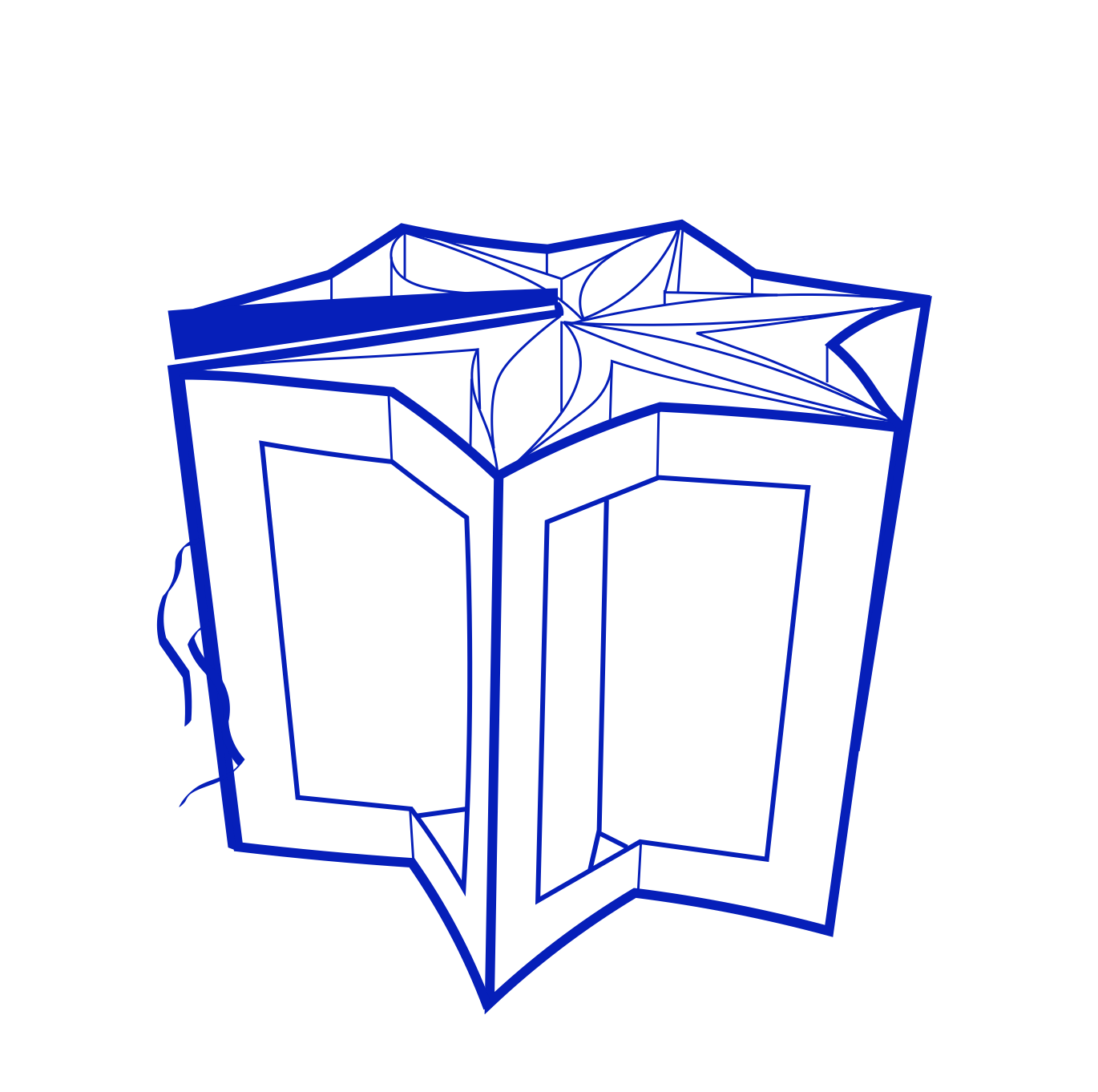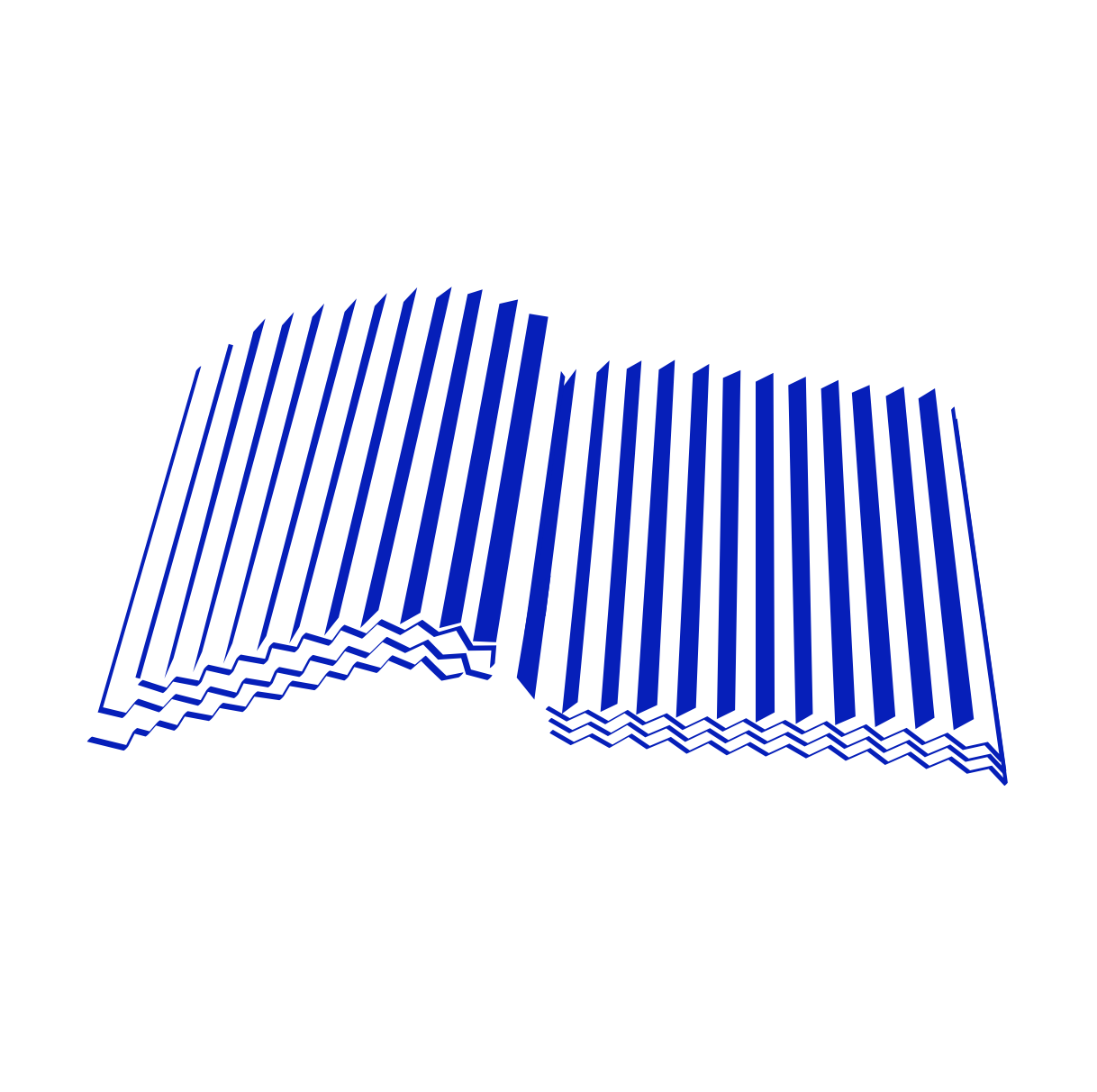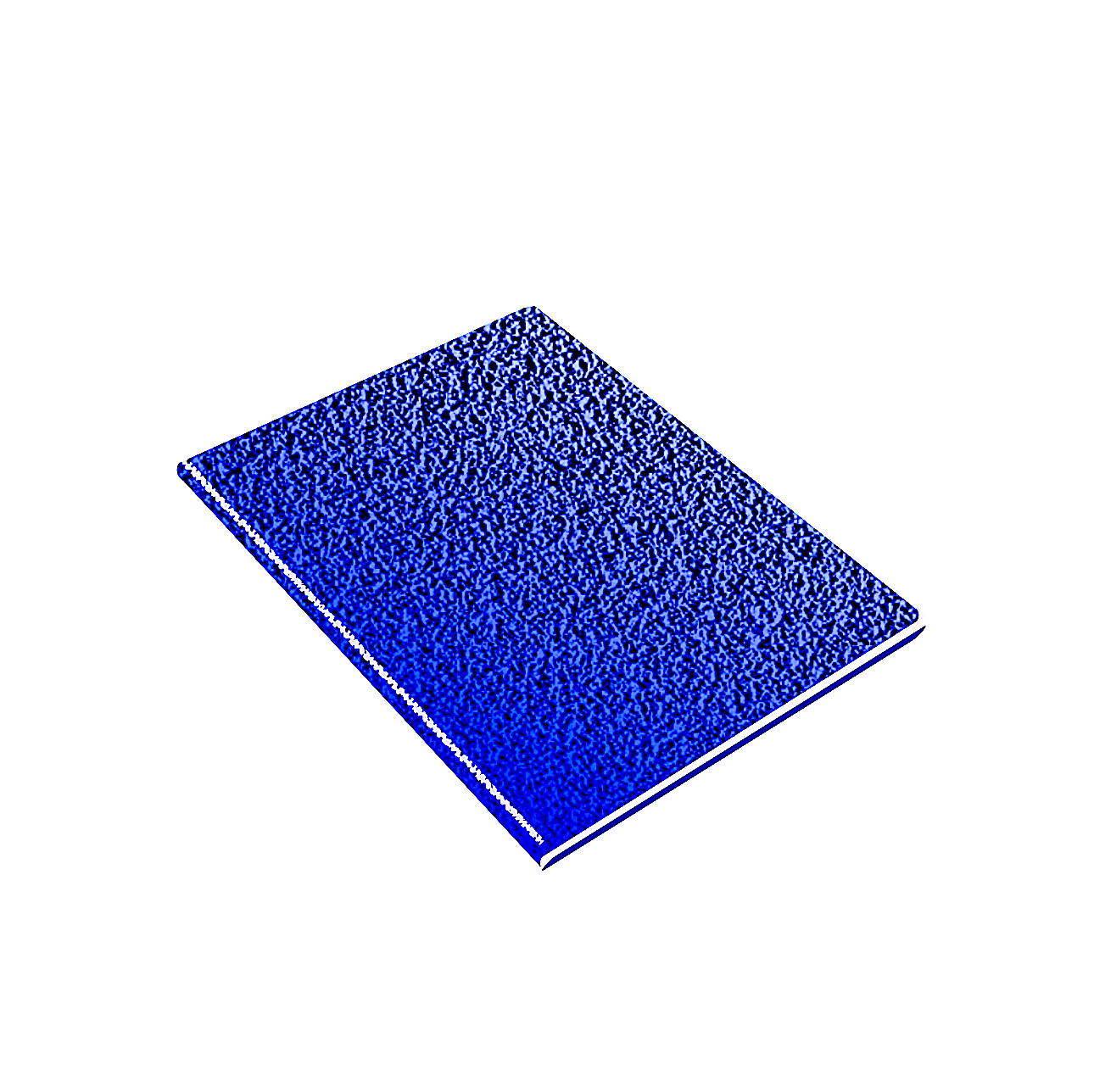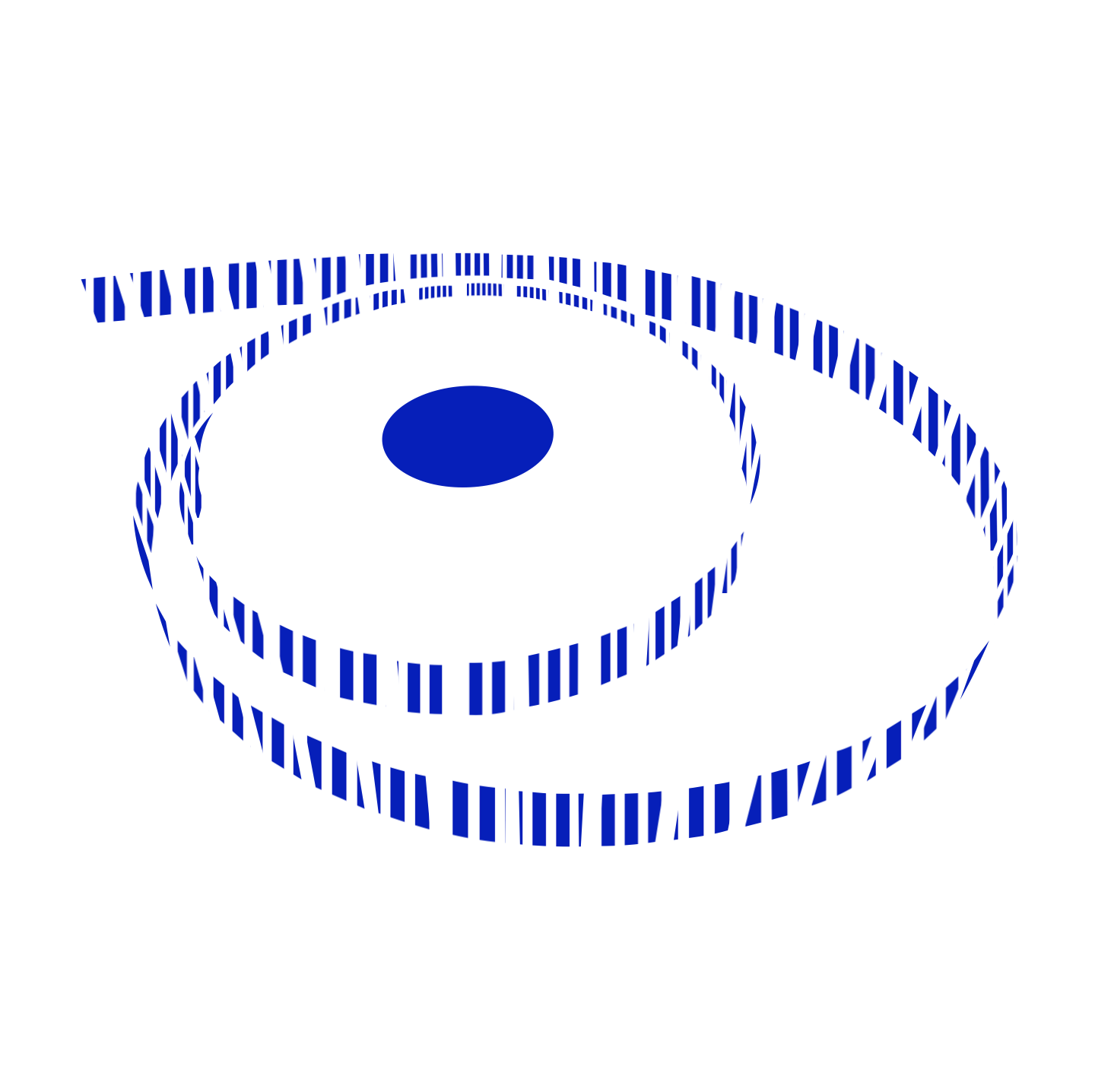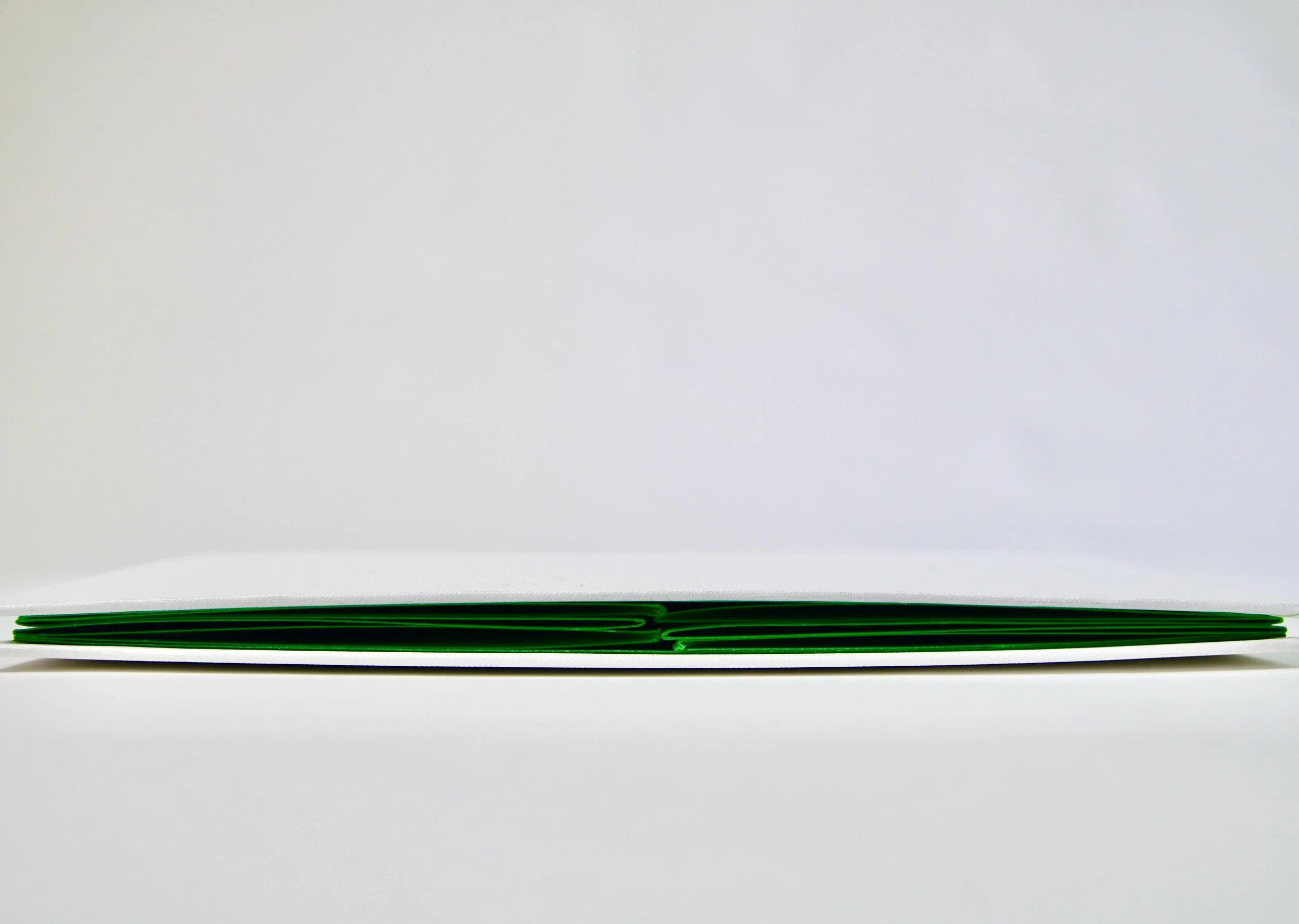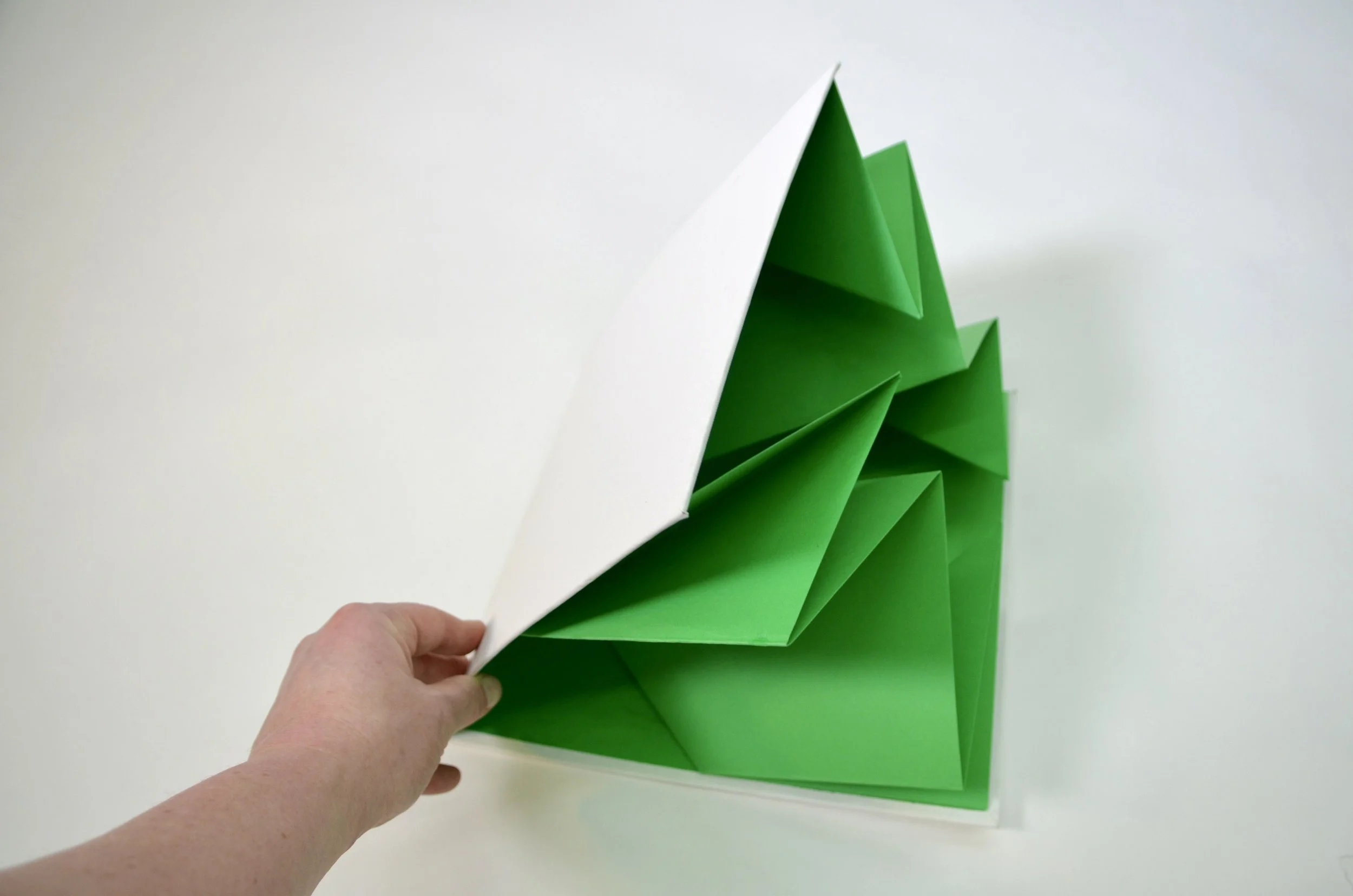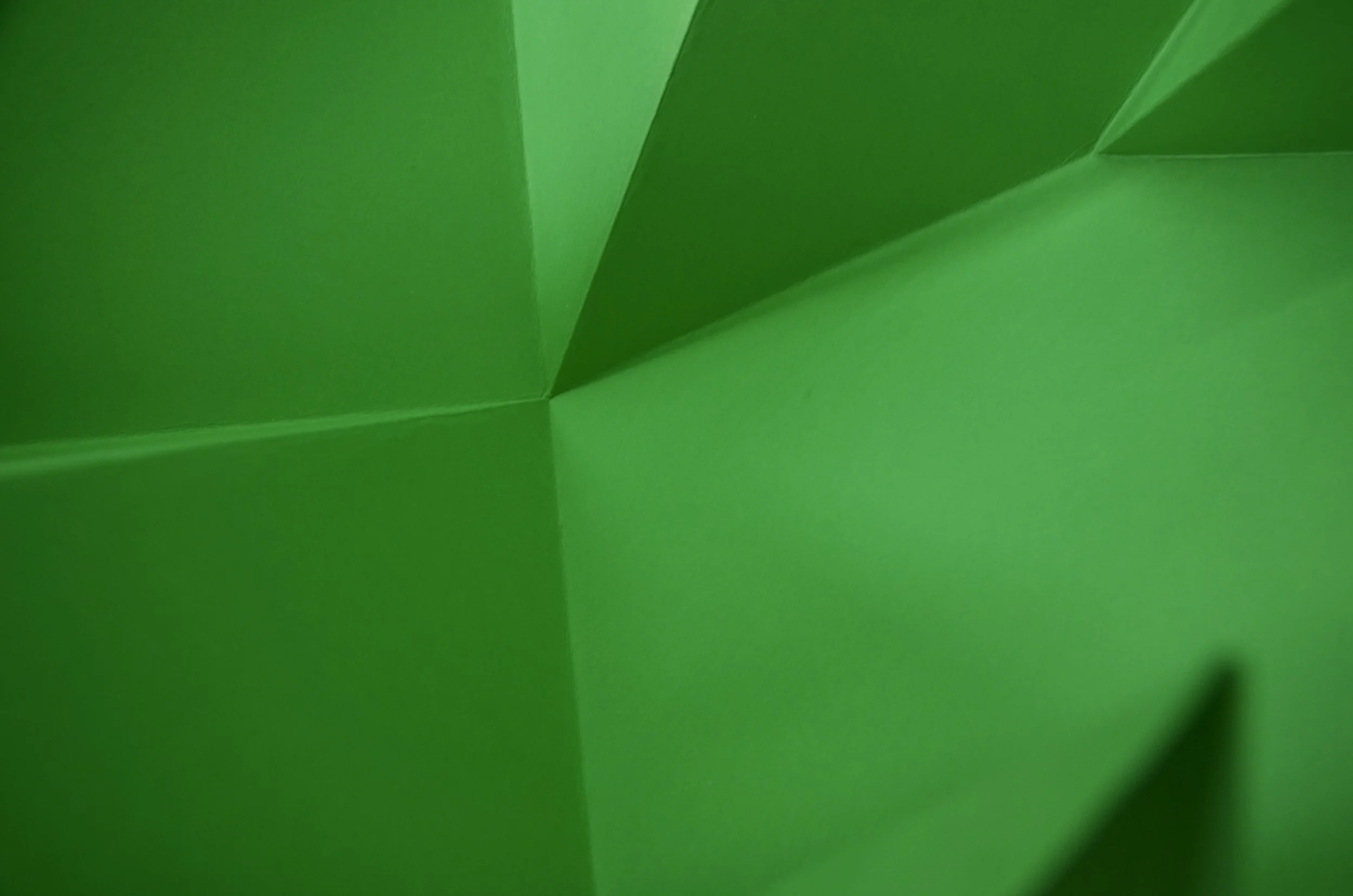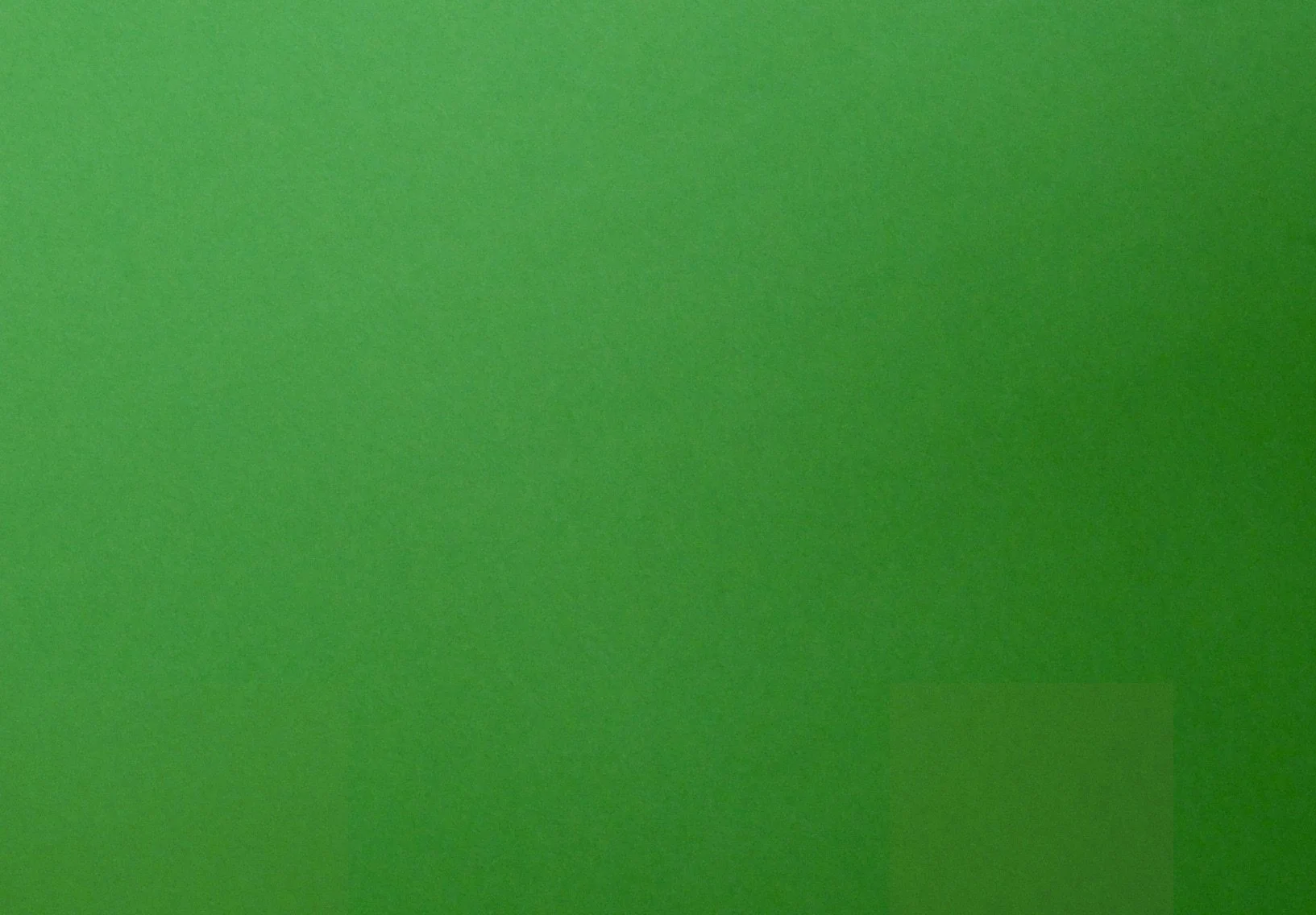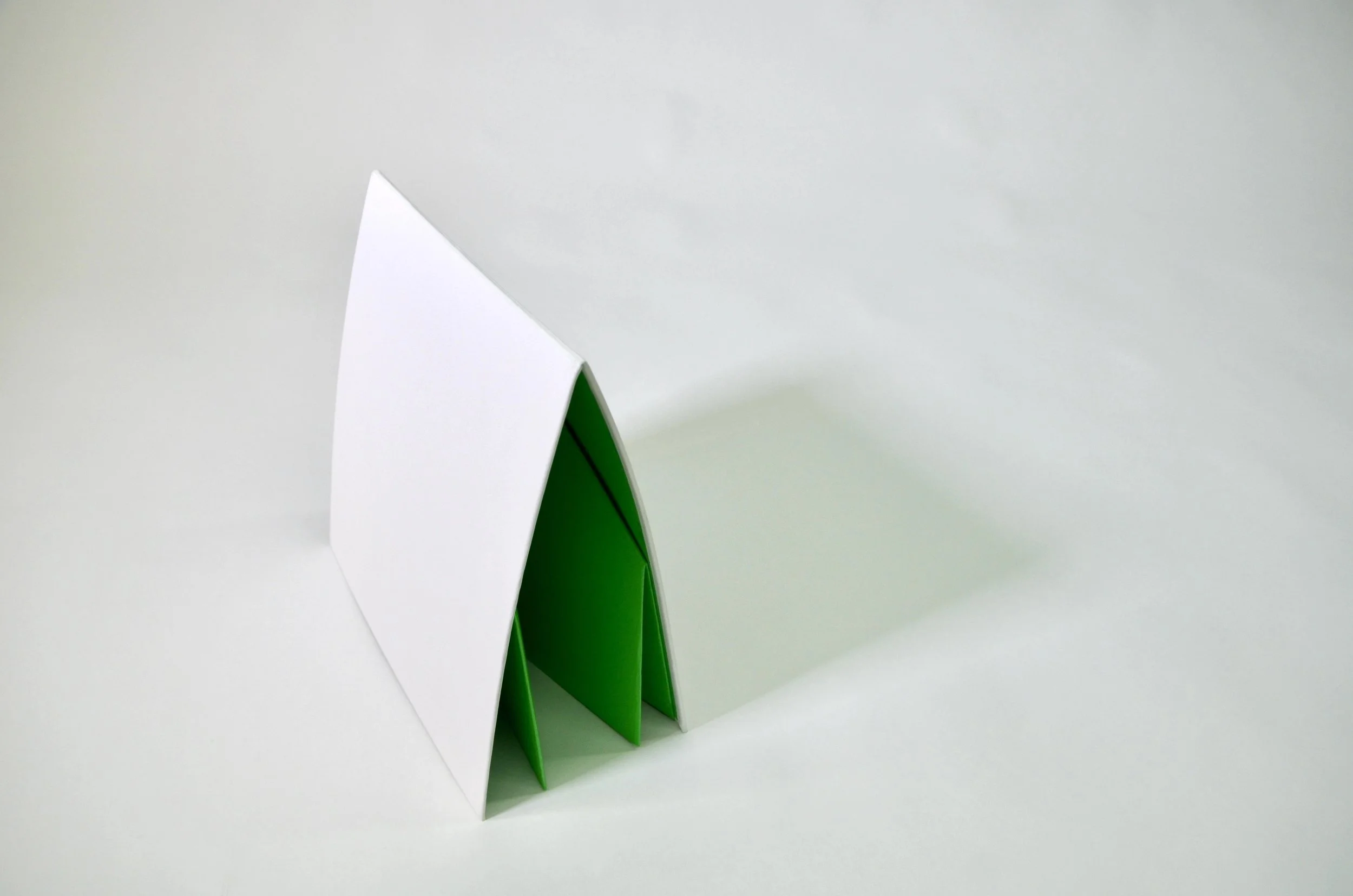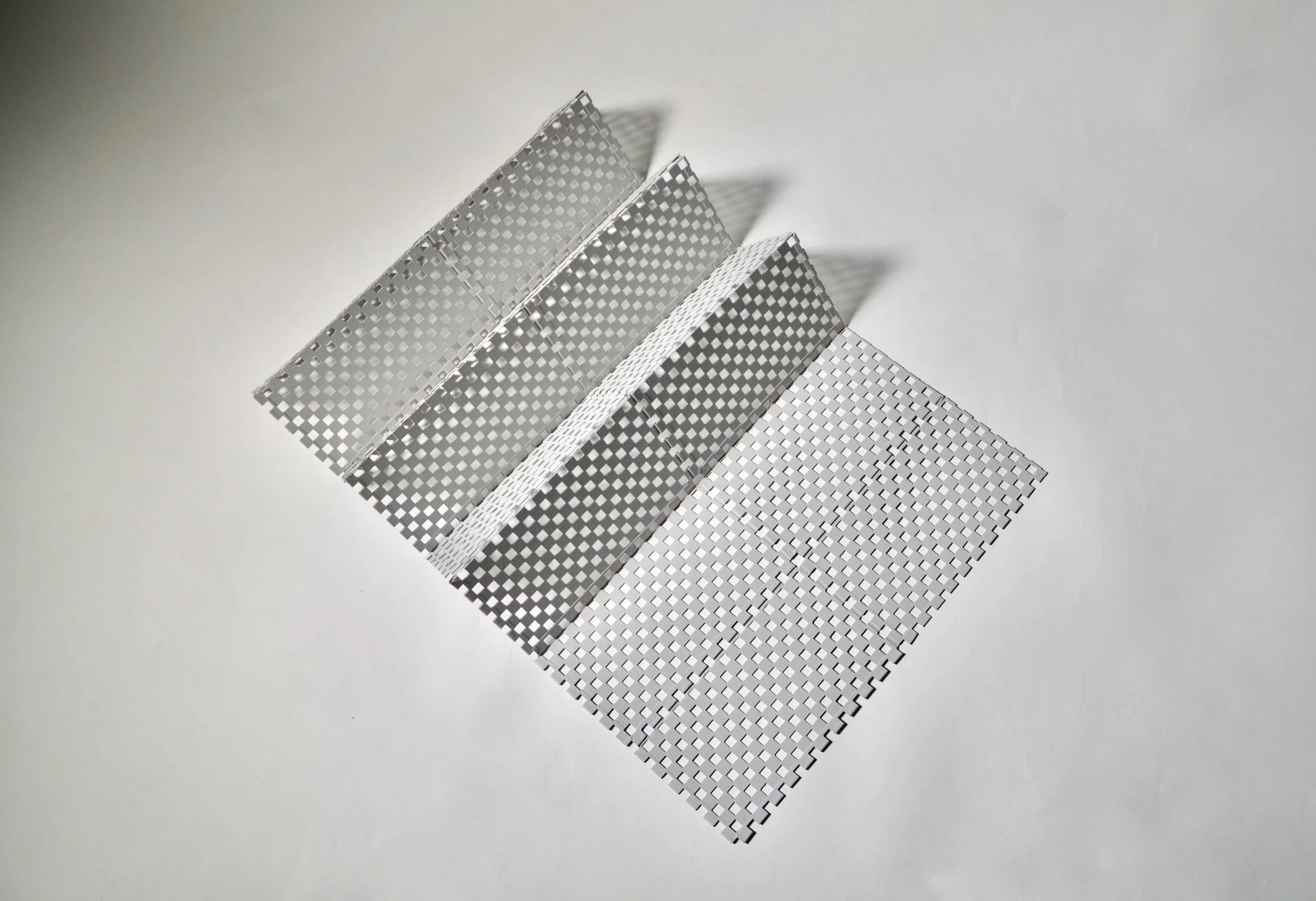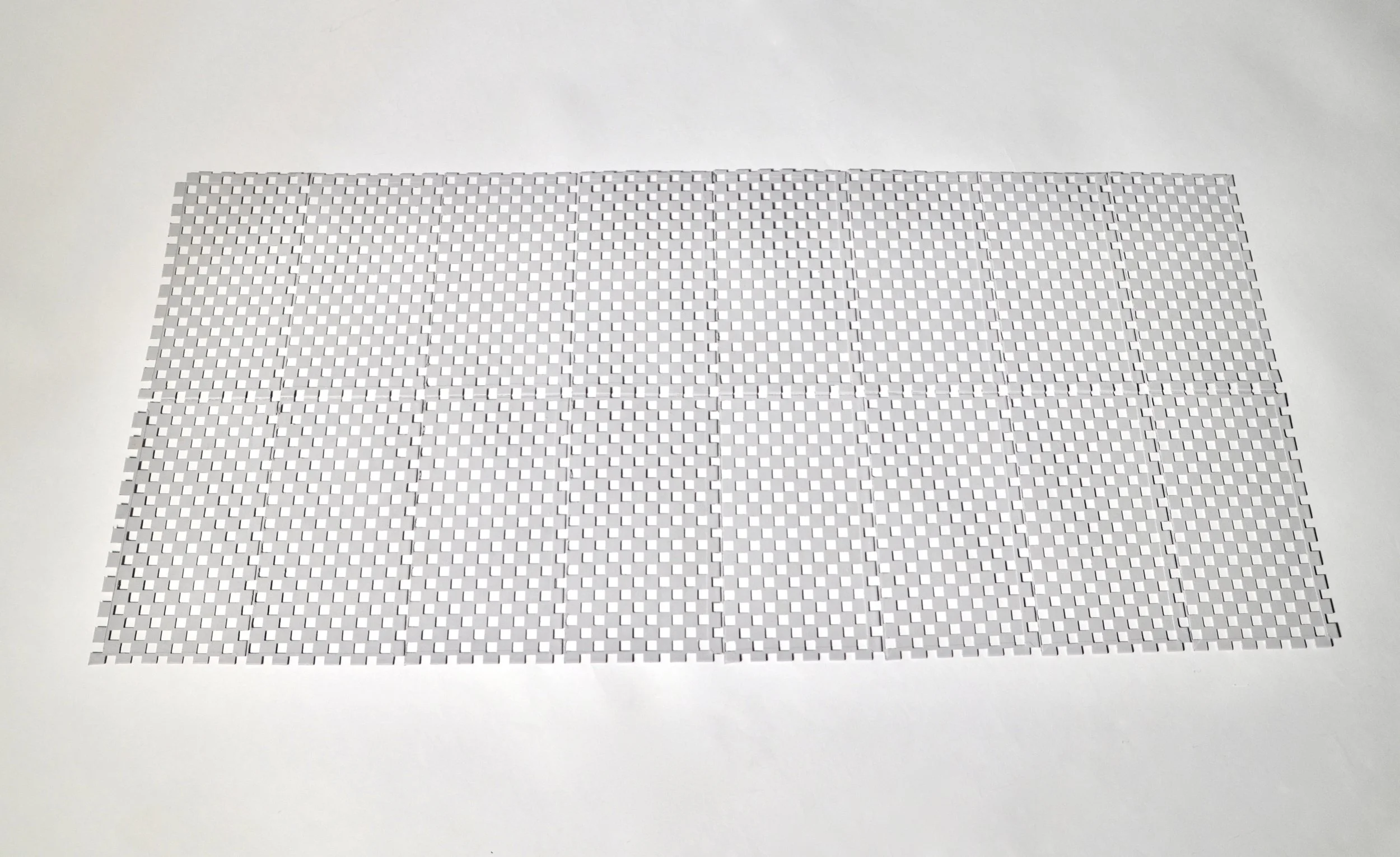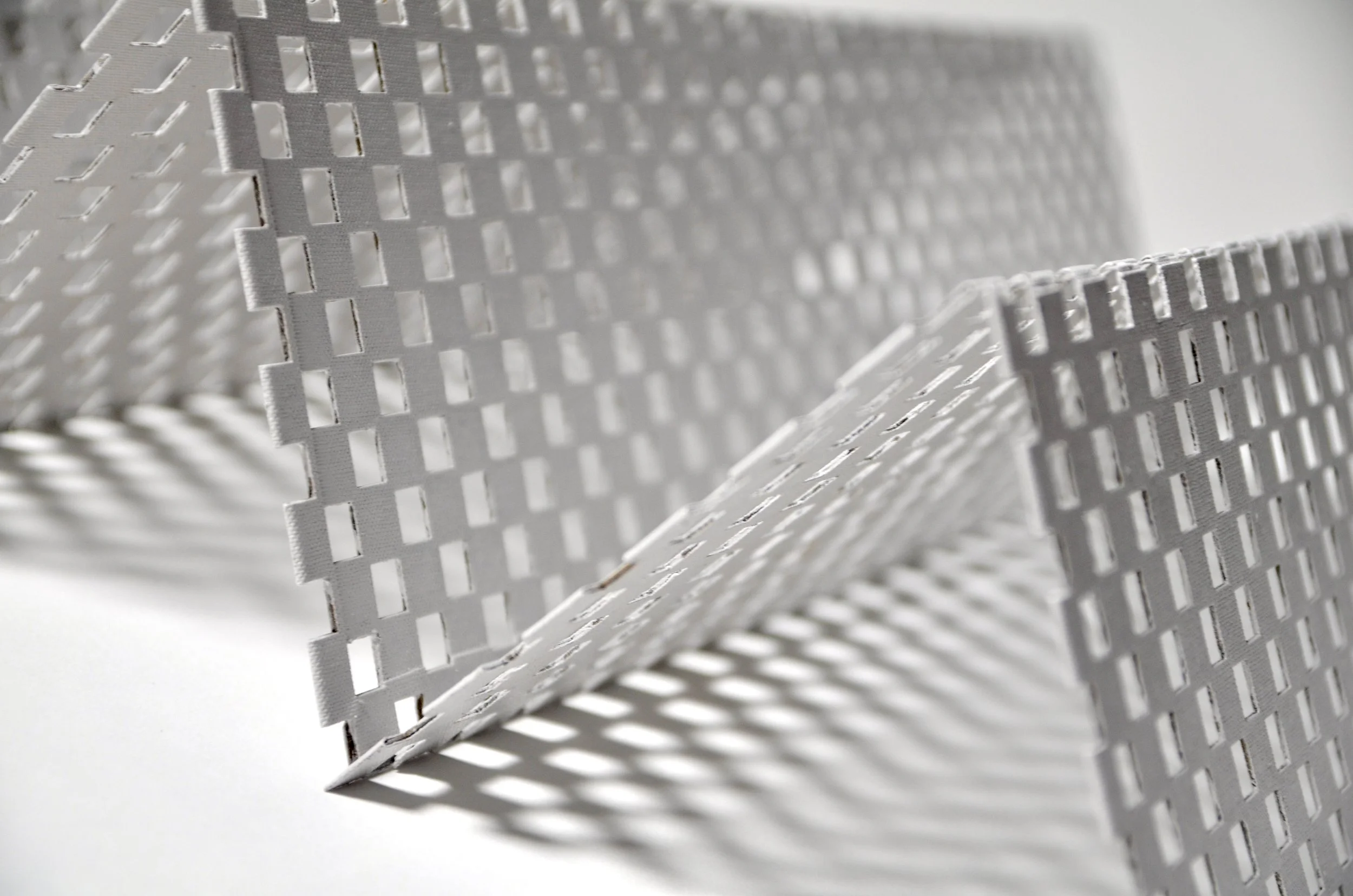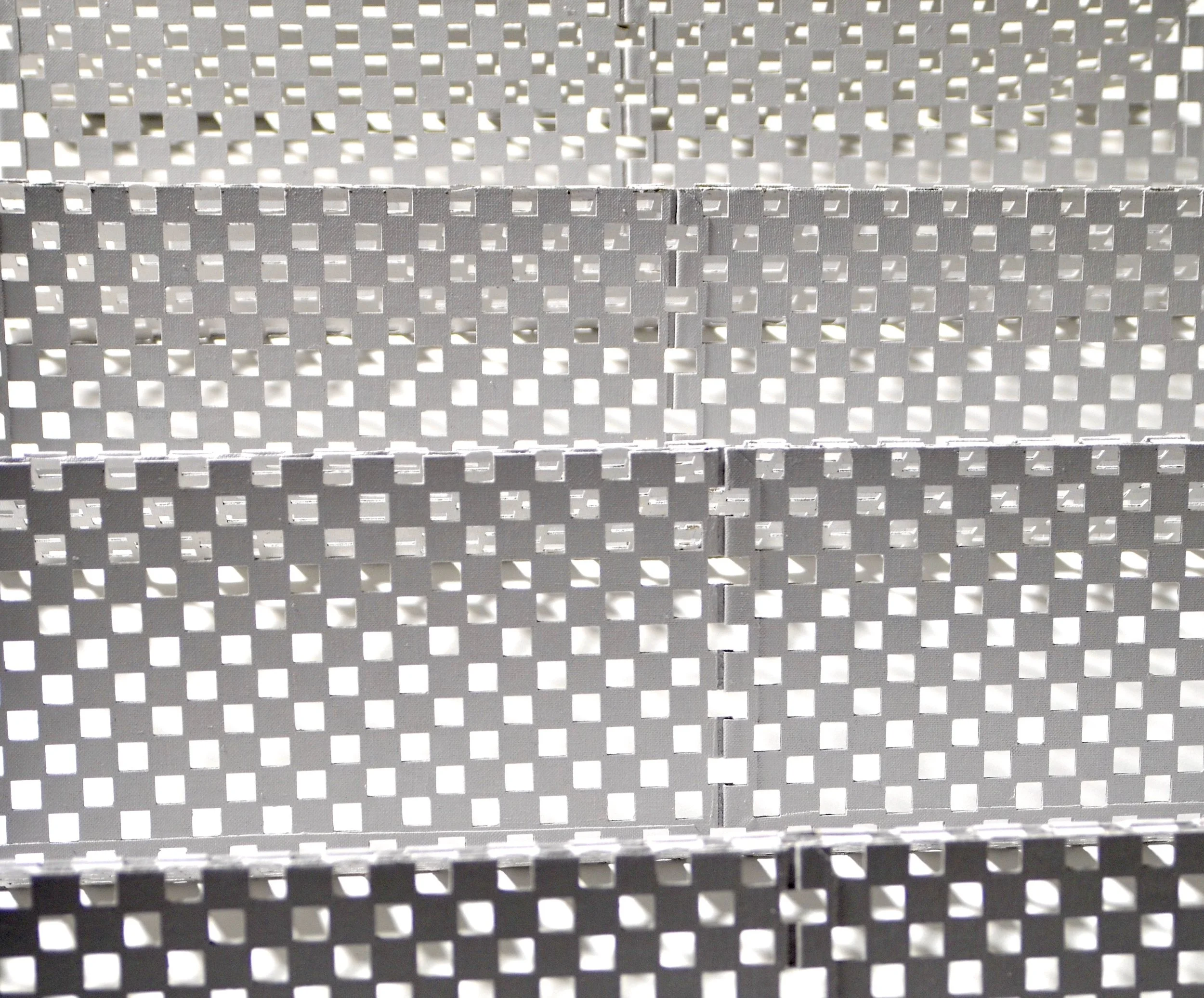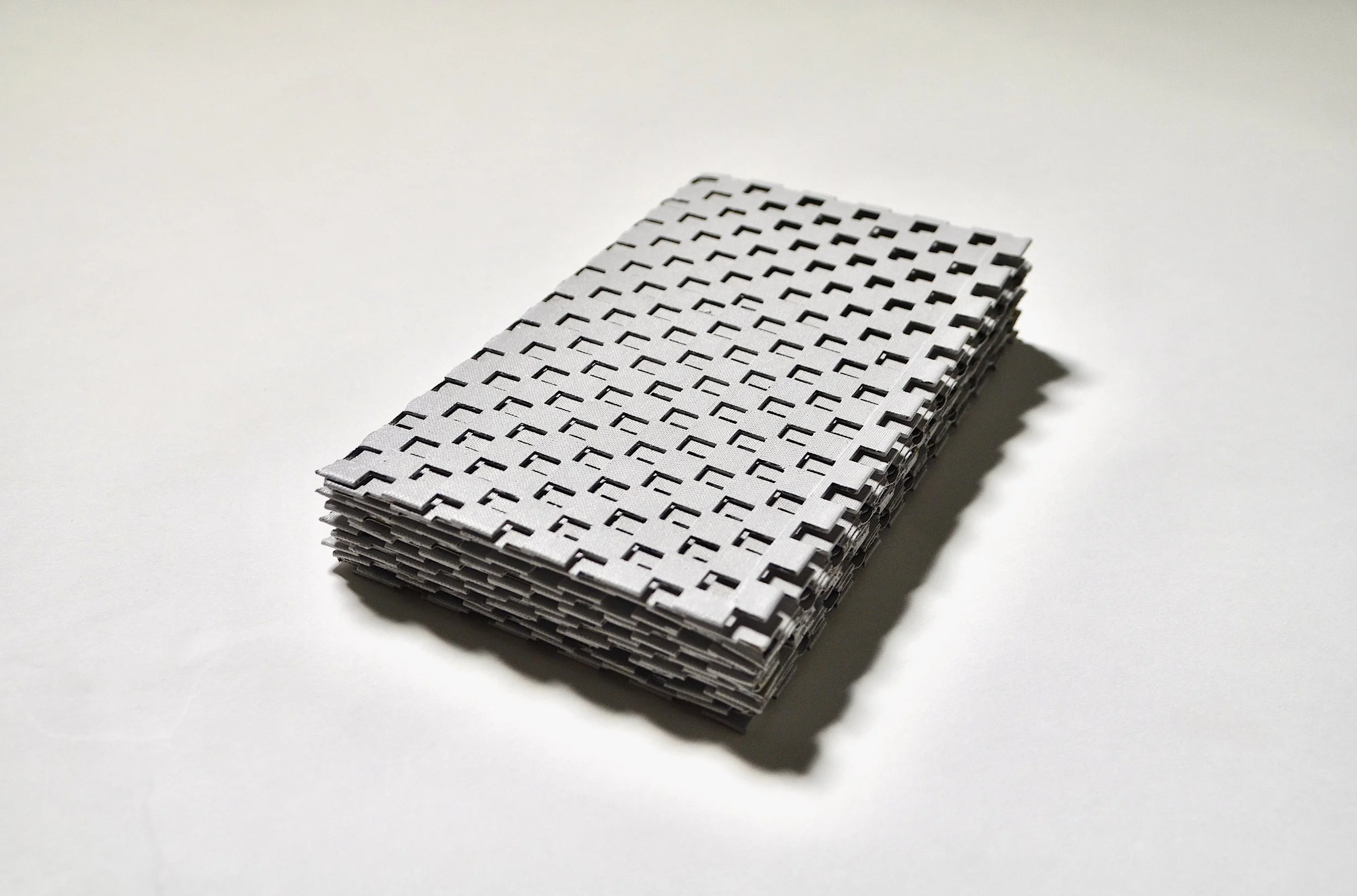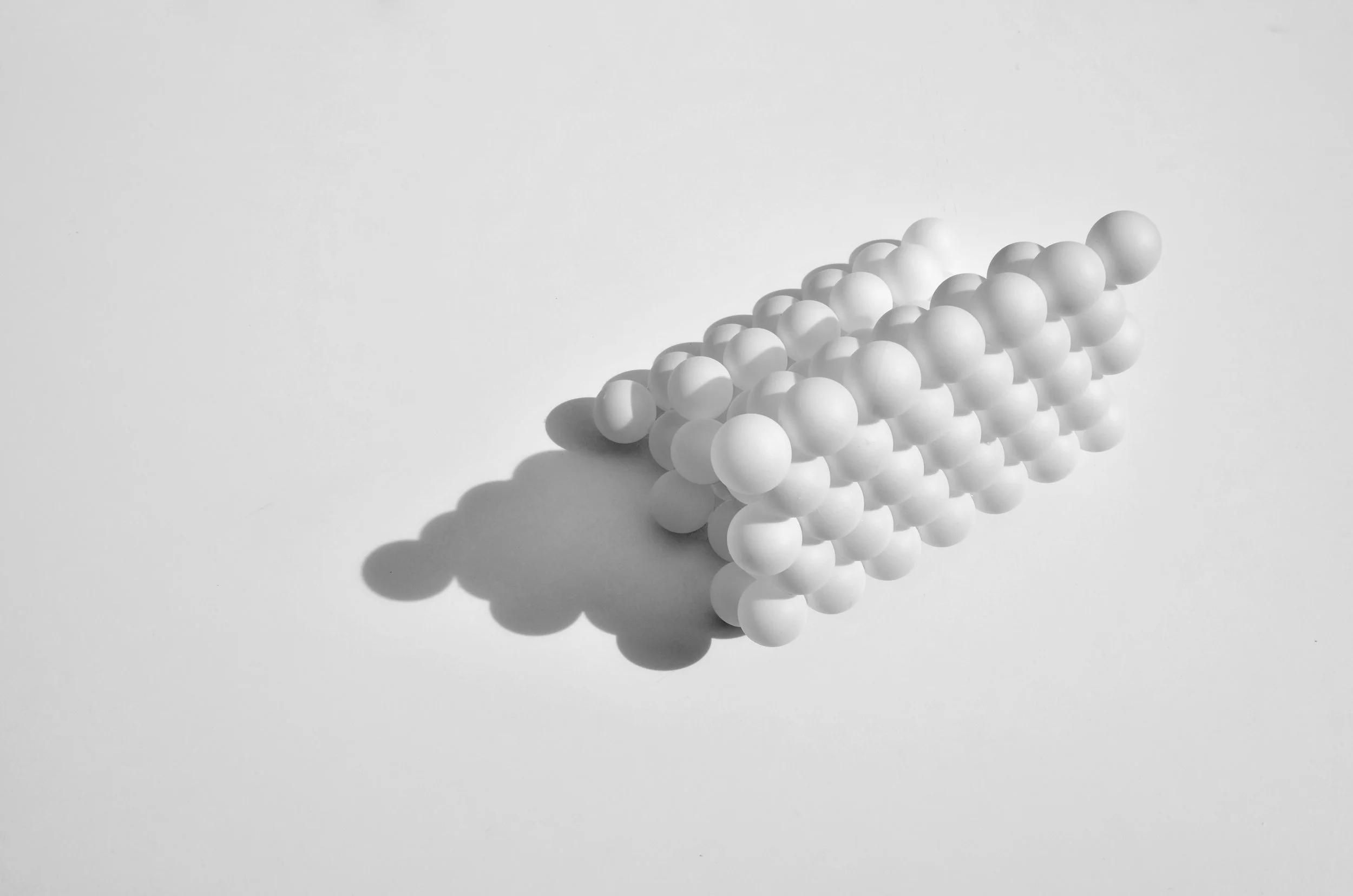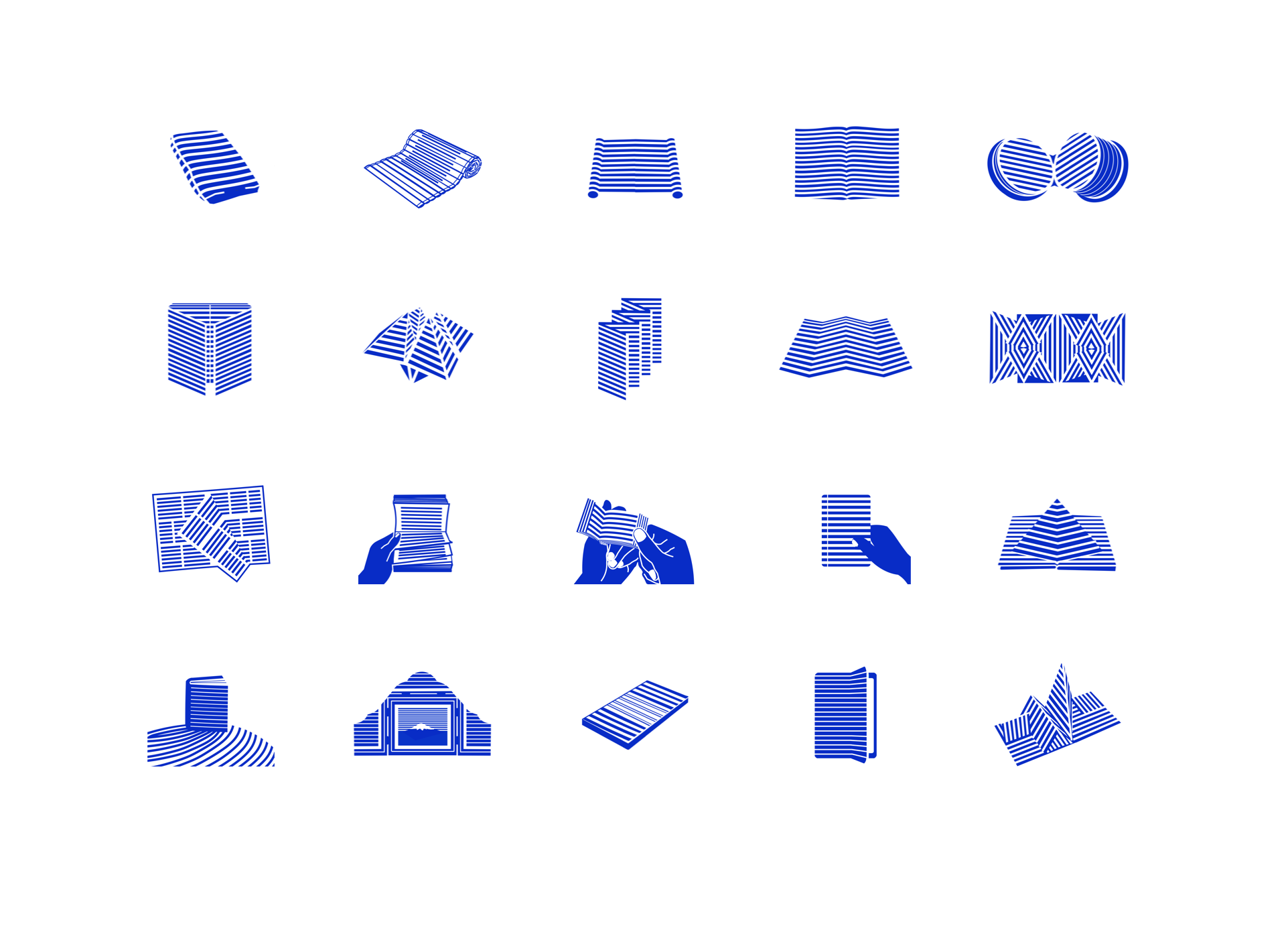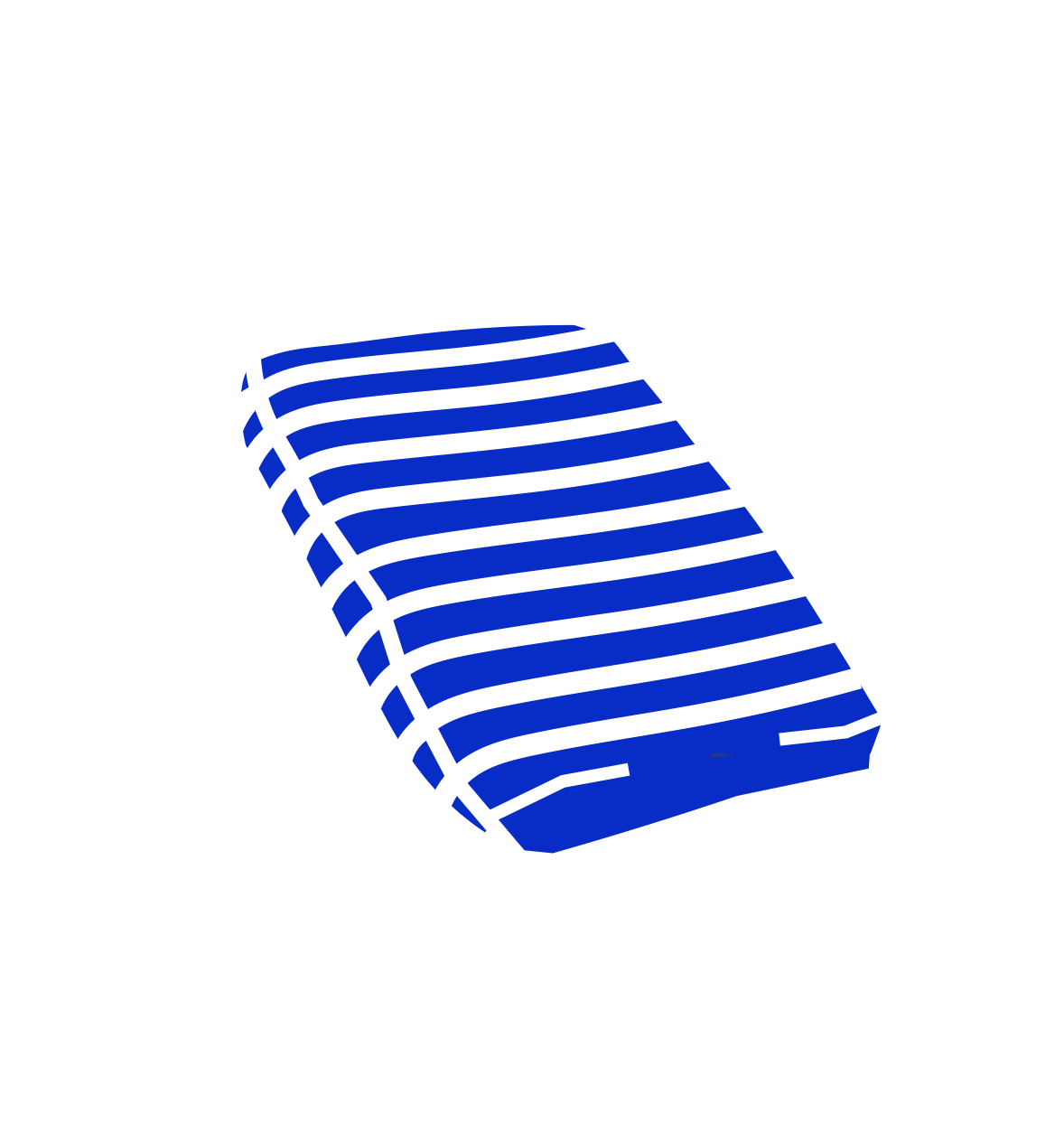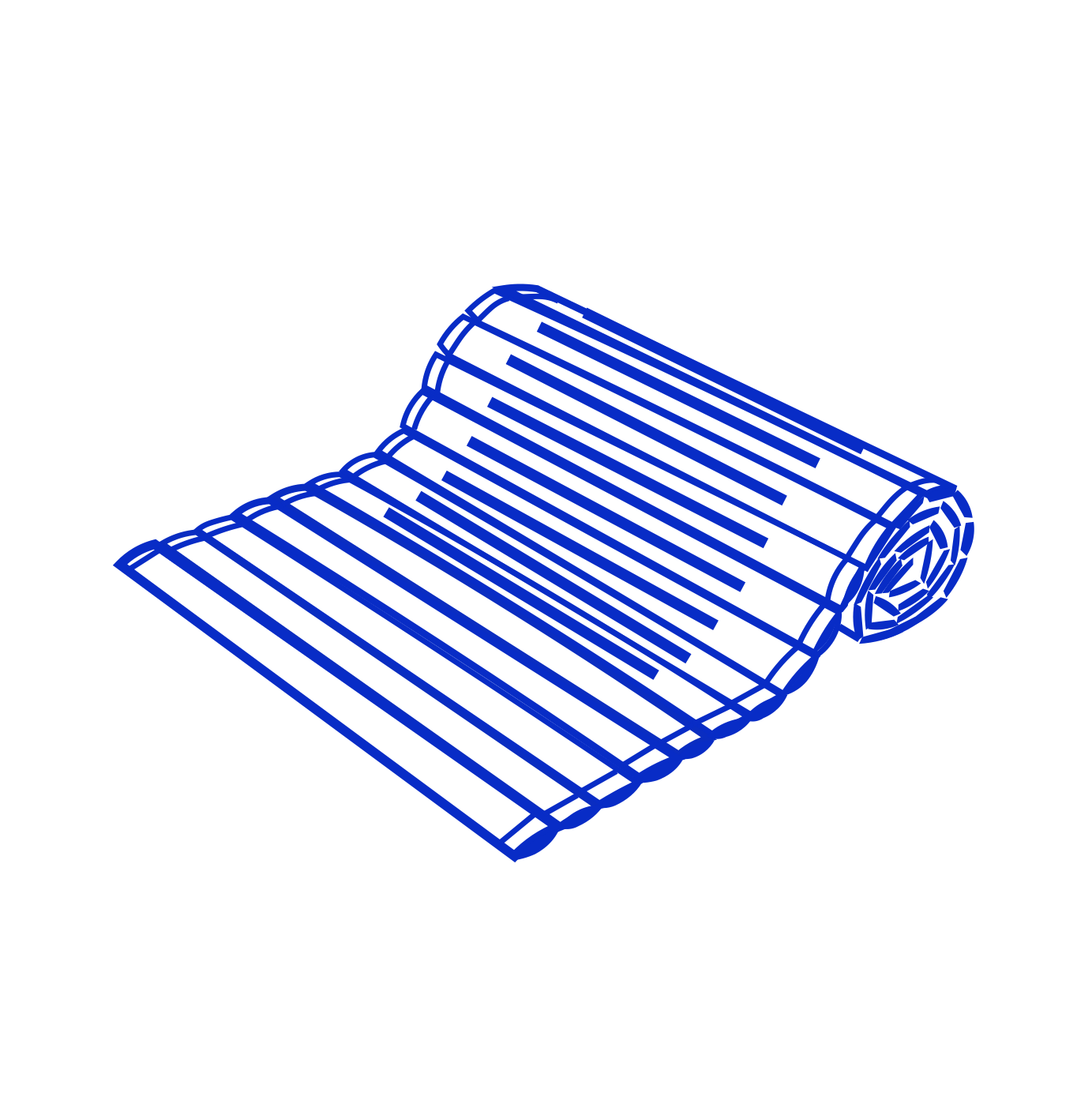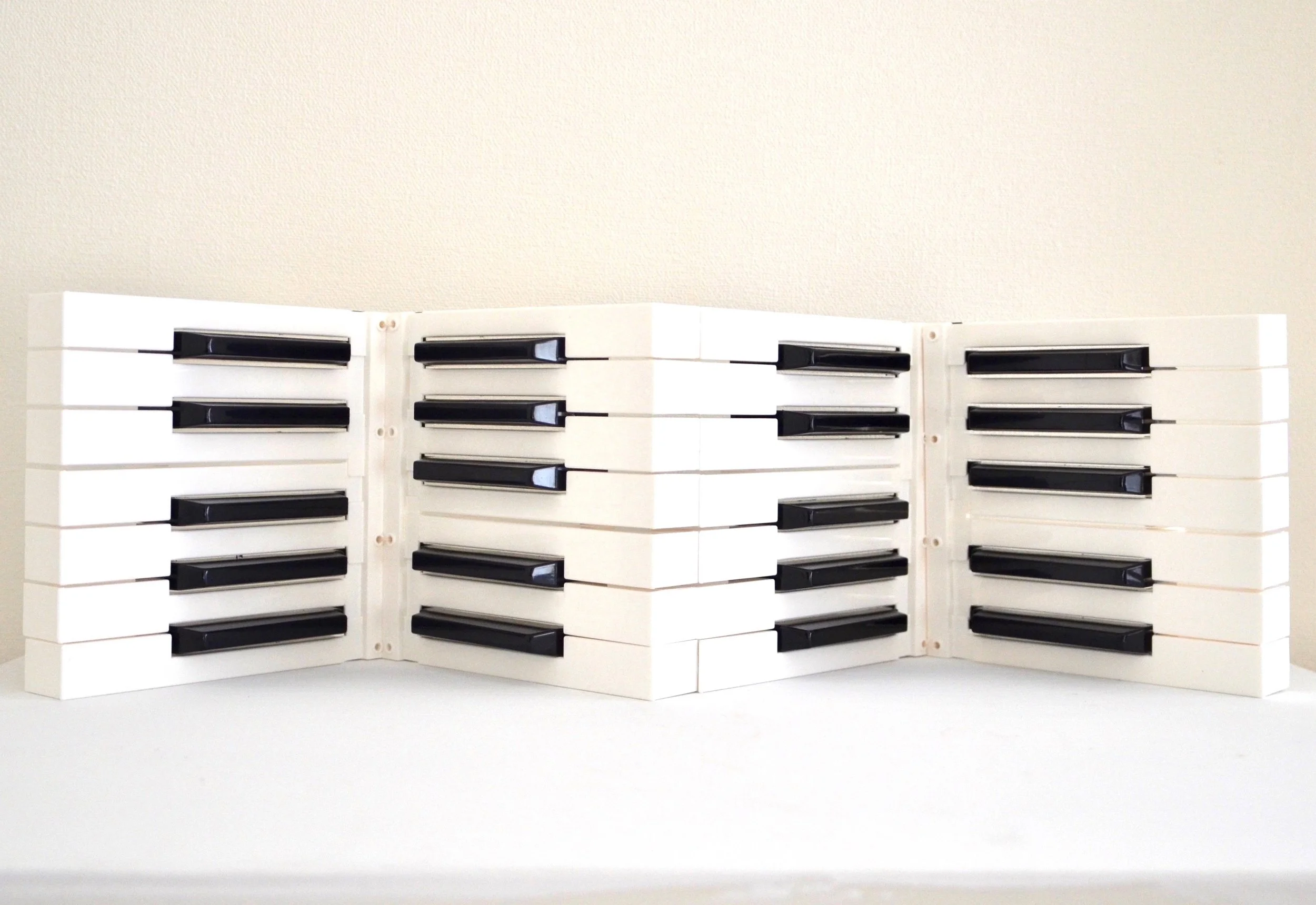Books forms are so incredibly varied. Every now and then I find myself visualising the forms that they take. Most recently, I described the following forms; hardback, dos-à-dos (back-to-back), zine, concertina, octopus, papyrus scroll, illustrated manuscript, guide book, carousel, choose your own adventure books, experimental books, manga, photobook, bunkobon, dragon scale binding, the anti-book, text books, audiobooks, microform film, and the book as sculpture (Robert The, Readers' Digest, 1988). Happy reading.
↑ Dos-à-dos (back-to-back) is a binding structure in which two separate books are bound together.
↑ Carousel. This format has layers in each segment. The viewer usually looks in a window or frame at the front of each segment.
↑ Experimental format. This illustration of a crinkle cut book is based on a book designed by Andy Taylor to reflect the two sides of Dr Jekyll & Mr Hyde.
↑ Manga. Comics or graphic novels originating from Japan.
↑ Dragon scale binding is a transitional book form that bridged the gap between using scrolls and pages in China.
↑ Anti-Book. This illustration is based on Memories, an artist's book made by the French social critic Guy Debord in collaboration with the Danish artist Asger Jorn in 1959. The book is most famous for its cover, a dust jacket made of heavy-grade sandpaper. The idea of a damaging cover was conceived by Guy Debord and Asger Jorn.
↑ Text book. Based on Pelican’s iconic series of non-fiction books that feature covers with geometric designs.
↑ Microform is a scaled-down reproduction of a document, typically either photographic film or paper, made for the purposes of transmission, storage, reading, and printing. Significantly smaller than its original counterpart, they require special devices to read the narratives stored upon.
